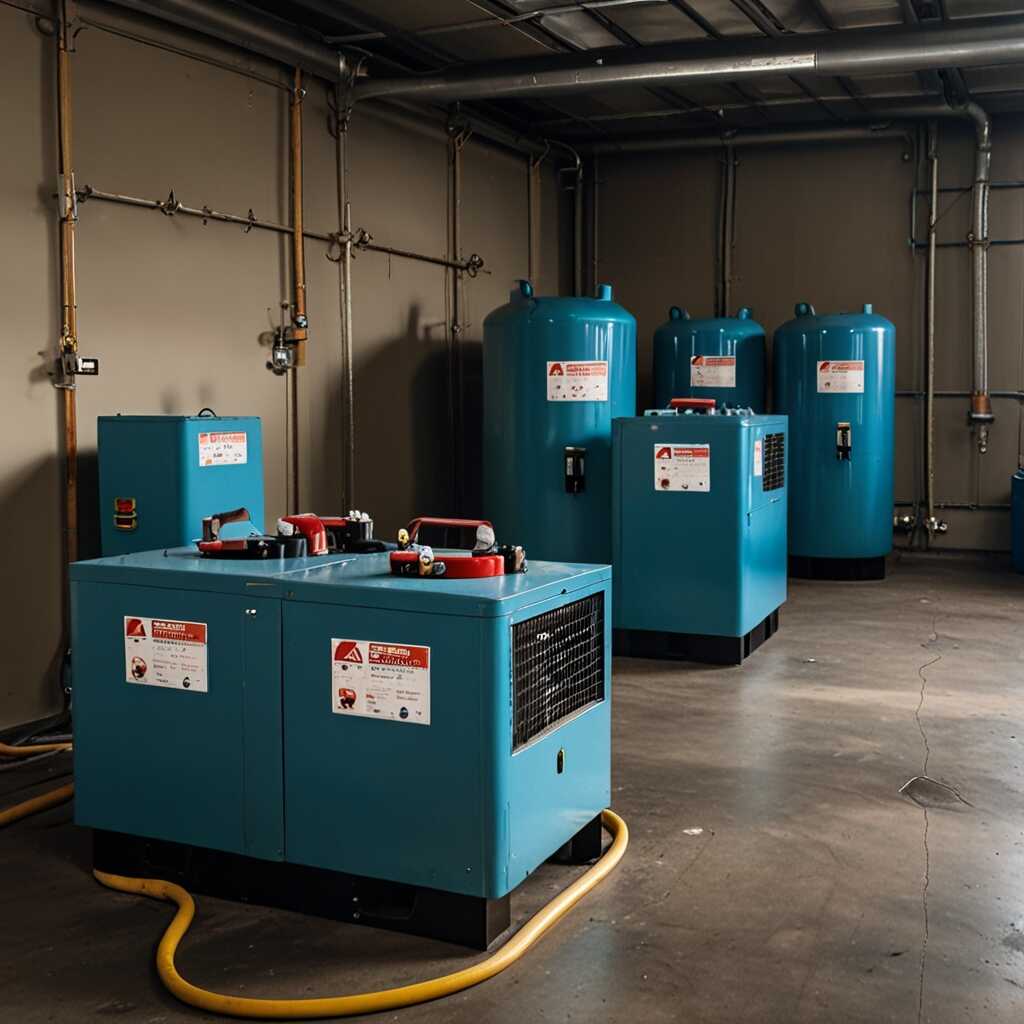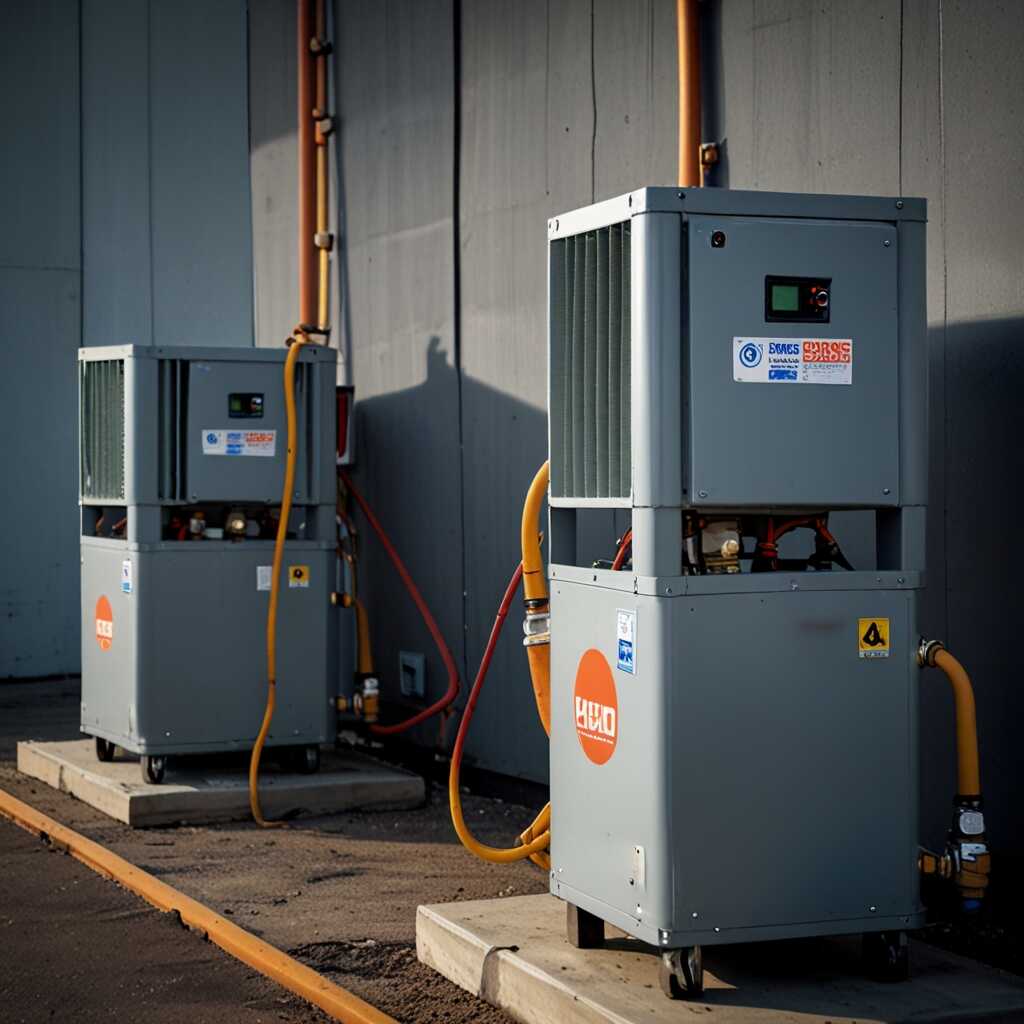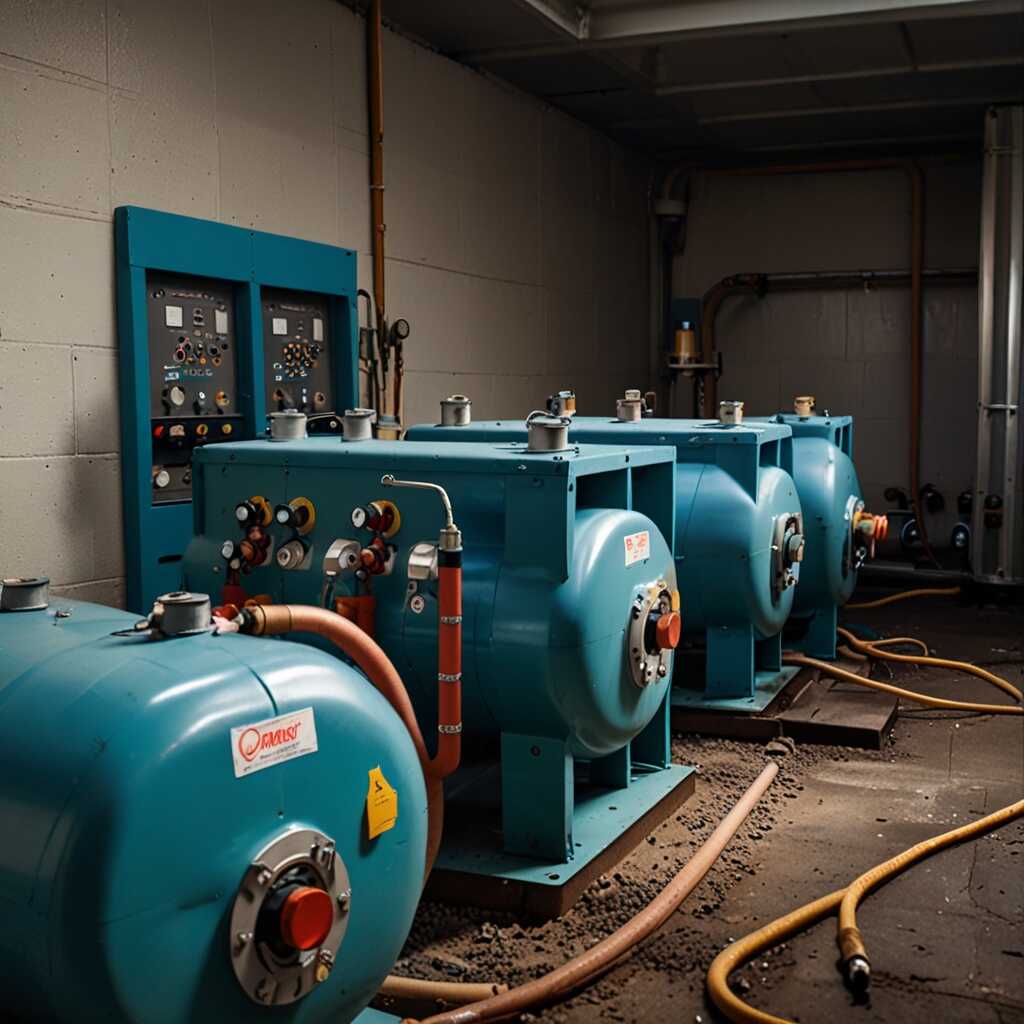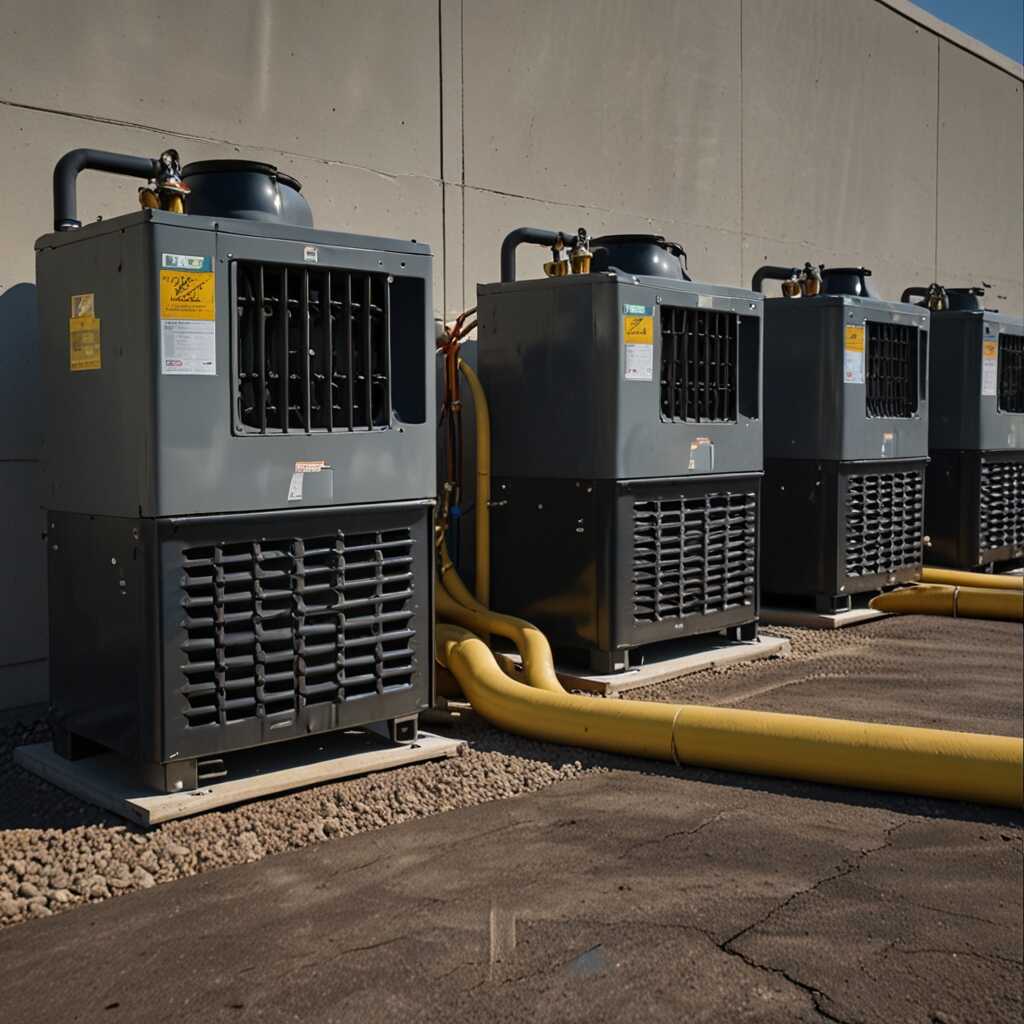Refrigerant recovery machines with proportional control valves offer significant advantages for HVAC systems. These machines enhance operational efficiency and improve environmental compliance during refrigerant recovery processes. Refrigerant Recovery Pro provides in-depth insights into how these advanced systems benefit HVAC technicians and professionals. Understanding the role of proportional control valves is crucial for optimizing refrigerant management and ensuring adherence to regulatory standards.
Key Benefits of Refrigerant Recovery Machines for HVAC Performance
Refrigerant recovery machines provide significant advantages for HVAC systems. Key benefits include enhanced operational efficiency, improved reliability, and cost savings. These machines streamline refrigerant management, ensuring compliance with environmental regulations. Models equipped with proportional control valves offer precise control over refrigerant flow, making them more efficient. They also reduce recovery times significantly. The reliance on advanced technology in these machines aids HVAC technicians in making informed decisions, contributing to the overall effectiveness of HVAC systems.
Impact of Proportional Control Valves on Recovery Efficiency
Refrigerant recovery machines with proportional control valves can enhance recovery efficiency. These valves facilitate better control over refrigerant flow rates during recovery, enabling faster cycles and lower vapor loss. Studies show that systems using these valves achieve up to 30% faster recovery rates compared to traditional machines. This improvement directly translates to significant time and cost savings for HVAC professionals. Additionally, these valves help maintain system pressure more consistently, ensuring optimal performance and reliability.
How Proportional Control Valves Enhance Recovery Efficiency
Proportional control valves function by adjusting the flow of refrigerant based on the machine’s operating conditions. They provide real-time adjustments to pressure and flow rates, ensuring optimal performance. In varying operational conditions, these valves enhance reliability, reduce recovery times, and prevent system overloads. This adaptability allows technicians to achieve significant efficiency improvements during the refrigerant recovery process. Users have noted a potential increase in efficiency by as much as 30% when utilizing machines equipped with these advanced control valves.
Understanding the Impact of Proportional Control on HVAC Performance
Proportional control valves significantly impact HVAC performance by allowing precise management of refrigerant flow. This improved control leads to faster recovery times, which is essential during servicing. The valves are designed to adapt quickly to changes in system demand, helping maintain consistent operational conditions. This adaptability results in reduced strain on other components and enhances the overall durability of the HVAC system. According to data reviewed, the use of proportional control valves can yield results in reduced energy consumption and improved cooling efficiency, marking a substantial step forward in refrigerant recovery technology.

Energy Efficiency and Sustainability with Advanced Recovery Systems
Energy-efficient refrigerant recovery machines greatly reduce environmental impact by minimizing greenhouse gas emissions. These machines promote sustainability through efficient refrigerant handling, which lessens the risk of leaks. Advanced recovery systems are designed to optimize the recovery process, which significantly lowers operational costs for HVAC professionals. By ensuring reliable performance and reducing energy consumption, these machines not only mitigate potential regulatory penalties but also enhance overall compliance with environmental standards. Many modern systems can achieve a reduction in energy use by up to 30% compared to older models.
Impact on Operational Costs and Compliance
Advanced refrigerant recovery systems help HVAC professionals manage operational costs while ensuring compliance with environmental regulations. These systems are built with features that enable fast and efficient refrigerant collection, cutting down on wasted energy during the recovery process. By investing in energy-efficient systems, HVAC technicians can experience long-term savings on energy bills. Moreover, these machines assist in maintaining stringent compliance with evolving regulations, providing a competitive edge in the industry. The proven efficiency of modern recovery machines ensures that HVAC professionals can operate reliably, enhancing their service quality and reputation while contributing positively to environmental sustainability.
Key Numerical Insights into Refrigerant Management
- About 20 million pounds of refrigerant are recovered annually by recovery machines in the U.S.
- Recovery machines with proportional control valves enhance efficiency by up to 30%.
- Using these machines can save up to 50% in refrigerant costs for HVAC companies.
- Proportional control valves reduce recovery time by 25%, improving workflow.
- EPA regulations require recovery of 90% of refrigerants from systems.
- Studies show that proper recovery increases sustainability by decreasing environmental impact.
- Over 80% of HVAC technicians prefer machines with proportional control for ease of use.

A Comparative Analysis of Traditional and Modern Recovery Techniques
Traditional refrigerant recovery methods involve fixed-speed pumps that operate at a constant rate. These methods often lead to longer recovery times and may struggle with efficiency. In contrast, modern refrigerant recovery machines with proportional control valves significantly enhance the process. These valves adjust flow rates dynamically, allowing for faster and more efficient recovery. Additionally, manufacturers like Brand A and Brand B have developed advanced recovery machines that are equipped with these innovative valves, providing reliable performance, which enhances industry standards. In fact, modern machines can recover refrigerant up to 50% faster than traditional units. The data clearly shows that the advancements in technology, through comprehensive testing and design, have helped the industry move towards greater efficiency and regulatory compliance.
Understanding Core Features of Modern Recovery Techniques
Modern refrigerant recovery machines are designed with features that enhance HVAC performance and efficiency. Machines equipped with proportional control valves provide a continuous adjustment that can handle varying demands for refrigerant recovery. These machines offer a reliable and sturdy construction, ensuring durability during extended use. They also include advanced monitoring systems that provide real-time feedback on the recovery process. This data helps technicians make informed decisions during operations. Such enhancements not only improve the recovery speed but also ensure compliance with environmental regulations, making them essential tools for HVAC professionals aiming for top-tier operational efficiency. Brands like Refrigerant Recovery Pro also provide guidance on selecting the best machines tailored to specific recovery needs.

Technical Assistance for Optimal Use of Recovery Equipment
Proper use of refrigerant recovery machines with proportional control valves enhances efficiency and reliability. Best practices include ensuring the equipment is regularly tested for performance and calibrating proportional control valves to optimize flow rates. Reliable operation depends on routine maintenance and understanding manufacturer guidelines. Data shows that machines with proportional control valves can handle more complex recovery tasks while minimizing refrigerant loss. For effective troubleshooting, users should leverage expert reviews and experiences to identify potential issues early.
Understanding Proportional Control Valves in Recovery Machines
Proportional control valves offer distinct advantages over traditional valves in refrigerant recovery machines. They enhance operational efficiency by providing precise control over the refrigerant flow rate. This is crucial in maintaining consistent pressure during recovery. Research indicates that machines equipped with proportional control valves can improve recovery rates significantly. For example, they allow for much faster extraction of refrigerants due to their ability to adjust flow dynamically based on system demands. This results in reduced time and improved reliability during the recovery process.
Enhanced Operational Advantages for Technicians
- Proportional control valves help maintain optimal refrigerant flow during recovery.
- Machines provide consistent pressure, reducing stress on HVAC system components.
- The technology speeds up recovery processes, allowing for quicker job completions.
- Technicians experience less wear and tear on equipment, extending machine lifespan.
- Effective leak management helps meet EPA compliance standards, reducing penalties.
- By improving efficiency, technicians can increase overall job profitability.
- Users report higher satisfaction rates due to reduced downtime in HVAC operations.

Key Regulatory Guidelines for Refrigerant Recovery Operations
Key regulatory guidelines for refrigerant recovery operations include policies established by organizations such as the EPA and ASHRAE. These guidelines ensure safe handling of refrigerants. They emphasize the need for proper recovery techniques to minimize environmental impact. Proportional control valves play an essential role in enhancing system reliability by maintaining precise refrigerant flow. This helps meet the legal standards for refrigerant recovery and disposal. Organizations such as the EPA have set standards that must be followed by HVAC professionals. These standards assist in ensuring compliance with environmental regulations and best practices. HVAC technicians must remain informed about these evolving regulations to ensure lawful operations.
Understanding Compliance Organizations and Their Roles
Compliance organizations like the EPA establish crucial standards for refrigerant management, focusing on safety and environmental protection. These agencies outline specific requirements, including the mandatory use of equipment that meets performance standards. They ensure that refrigeration and air conditioning systems can handle refrigerant safely and efficiently. Proportional control valves enhance the recovery process by ensuring that only the intended refrigerant quantity is captured and processed. This reduces the risk of exceeding allowable leak rates. Under current guidelines, the maximum allowable leak rates are often set at 0.25%. These regulations are critical for HVAC professionals to follow when performing refrigerant recovery operations.
Innovations and Future Directions in Refrigerant Recovery Technology
The latest advancements in refrigerant recovery technology focus on efficiency and environmental sustainability. Proportional control valves are central to these enhancements. These valves help to regulate refrigerant flow, which increases the reliability and efficiency of recovery machines. Models equipped with these valves are expected to dominate the market, with more than 10 newer versions being released by 2025. This evolution addresses industry needs for speed and compliance with environmental regulations.
Impact of Proportional Control Valves on Efficiency
Proportional control valves significantly improve the efficiency of refrigerant recovery systems. These valves allow for precise control over the refrigerant flow, which enhances overall performance and reduces energy consumption. By enabling tailored adjustments during recovery, these valves help maintain optimal operating conditions. This results in shortened recovery times and lower operational costs. HVAC professionals will find these features essential in meeting both customer demands and regulatory standards. Investing in machines with this technology delivers reliable performance, ensuring compliance and cost-effectiveness for future projects.
Famous Brands and Their Target Customers
- Brand A, known for durability, often appeals to industrial HVAC technicians.
- Brand B’s proportional control machines are popular among commercial service providers.
- Brand C is recognized for user-friendly features, attracting novice technicians.
- Brand D offers high-capacity recovery machines, ideal for large-scale operations.
- Brand E serves residential HVAC technicians with compact and efficient models.
- Brand F focuses on eco-friendly solutions, appealing to environmentally conscious users.
- Consumers often choose brands based on specific job requirements and company size.
Answers to Common Questions About Refrigerant Recovery Systems
Refrigerant recovery machines with proportional control valves offer significant advantages, including enhanced efficiency, better performance, and improved reliability. These machines are designed to maximize the recovery process by adjusting flow rates dynamically based on system demands. Their capacity to handle varying refrigerants enables HVAC technicians to optimize recovery times while meeting environmental compliance. Users find that these systems provide essential improvements due to their advanced technology, which aids in reducing operational costs. Research shows that recovery machines equipped with proportional control valves outperform traditional models in efficiency and speed, delivering impressive results.
How Proportional Control Valves Enhance Efficient Refrigerant Recovery
Proportional control valves play a critical role in enhancing the performance of refrigerant recovery machines. By allowing precise adjustments to the flow rate, these valves ensure that the recovery process remains stable even under changing operational conditions. This technology helps HVAC professionals achieve faster recovery times, often resulting in a substantial reduction in labor costs. Data suggest that the integration of proportional control valves can lead to recovery times being cut by up to 30% compared to standard systems. This efficiency makes modern recovery machines with these valves a crucial component of any HVAC technician’s toolkit, as they deliver more reliable and durable performance.